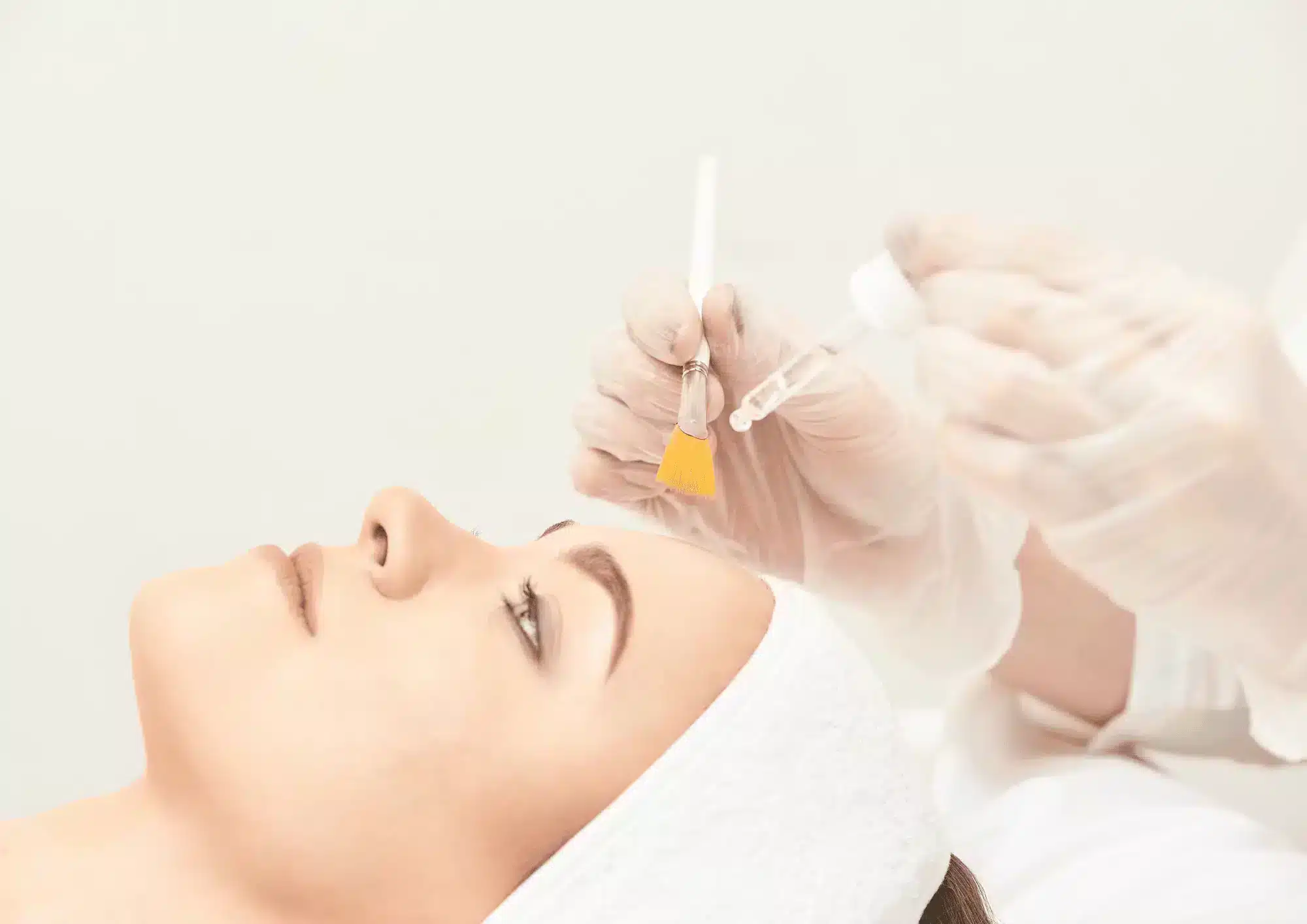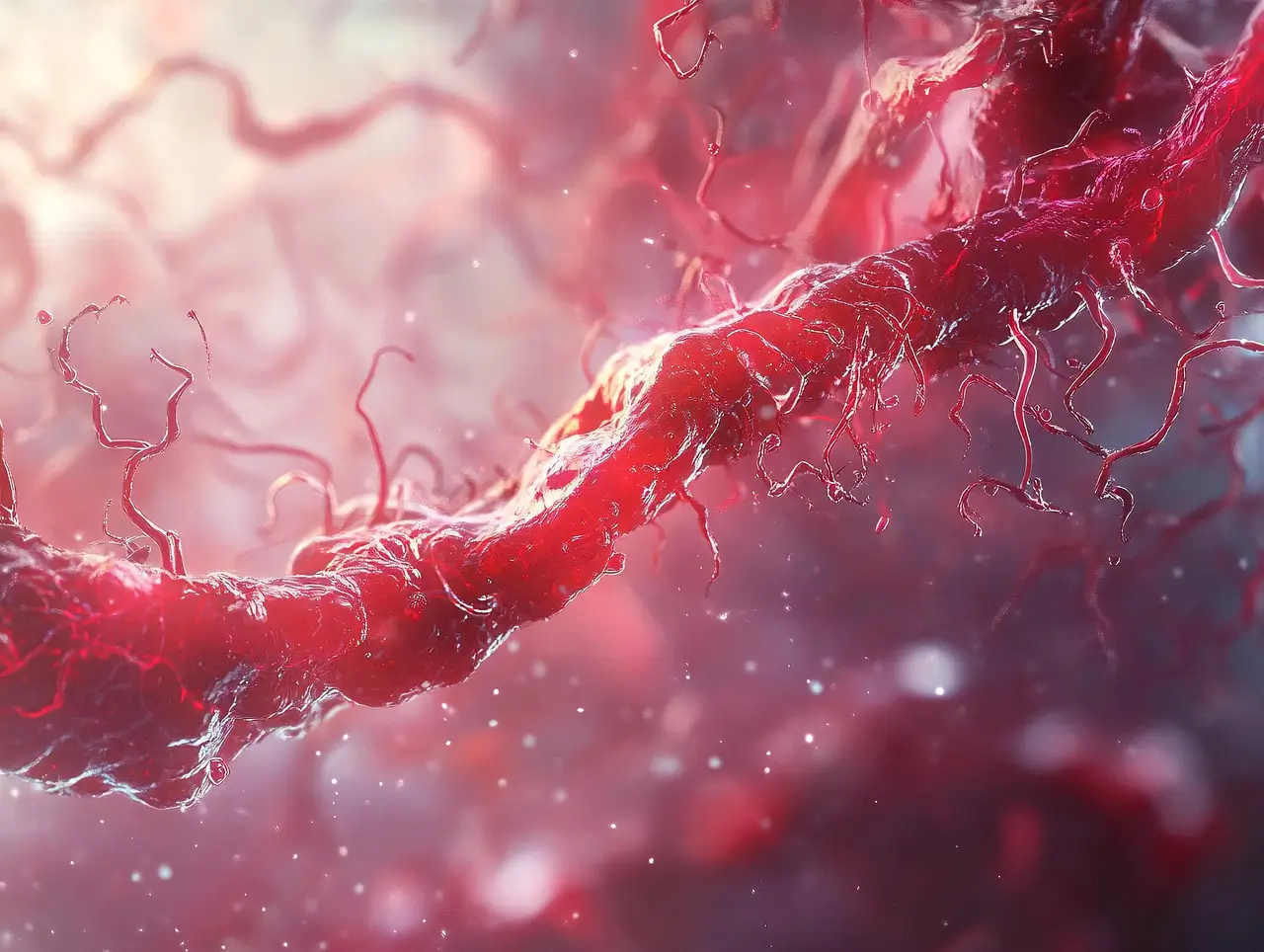When talking about chemical peeling, it is important to recognize that these peels actually induce controlled chemical damage onto the skin. By using what is usually an acidic solution, chemical peels remove the epidermis and dermis, so that they can undergo regeneration from nearby adnexal structures, which ultimately results in the improvement of skin color, texture, and other concerns. Depending on the strength of the solution, the level of dermal collagen affected will either be superficial, medium, or deep. This article will focus on the peeling agents available and how they are capable of restoring epidermal structures. The indications of the different solutions will also be elaborated.
Popularity of skin peels
The Plastic Surgery Statistics Report in 2017 that was prepared by the American Society of Plastic Surgeons showed that there were close to 1.4 million individuals who opted for chemical peeling, which is a significant increase over the 1.15 million individuals that opted for such treatments in 2000. This increase of approximately 20% shows an obvious growing demand for chemical peeling. Along with pop media often advertising the benefits of such treatment, this growth stresses a growing need for practitioners to be more comfortable and confident with chemical peels and chemical rejuvenation procedures requested by patients.
Purpose of skin peels
The main indications for chemical peeling are the following conditions: scars, pre-neoplastic or neoplastic epidermal lesions (e.g. actinic keratosis, lentigines), acne, pigmentary problems, demarcation lines caused by other procedures, and UV-induced skin damage. Amongst these reasons for chemical peeling, UV-induced skin damage remains the most common reason for patients seeking out chemical peels. As previously mentioned, the depth of penetration of the chemical peel depends on the solution. Superficial peels are used for epidermal peeling; medium peels are used for the papillary dermis; and deep peels are used for the reticular dermis. Overall, with the advent of more modern aesthetic devices and aesthetic techniques that are more efficient, such as injectable dermal fillers and the versatile use of botulinum toxin, chemical peeling has lost some of its luster as it has become more of an adjuvant therapy following these treatment methods.
Combinations
Since different chemical peeling agents have different mechanisms of action, many practitioners prefer to combine several peeling agents to compound their effects.
Frequently used hydroxyl acid combination therapies are: Skin Tech’s Easy Phytic Peels, where glycolic, lactic, phytic and mandelic acid are used; Skin Tech’s Easy Droxy Versicolor, where glycolic, lactic, salicylic, citric, and kojic acid are used; ZO’s 3Step Stimulation Peel, where glycolic, salicylic, and lactic acid are used; Agera Skin Peels, which uses salicylic acid, 1-ascorbic acid, and lactic acid; and NeoStrata’s Skin Peel Renewal Solution, which uses glycolic acid and mandelic or citric acid.
Superficial peels
The superficial chemical peels are ideally used on patients with acne, discoloration and sun spots, surface scars, and fine lines. Patients need to adhere to pre- and post-treatment protocols that are vital in optimizing the aesthetic outcome. As the patient adjusts to the peeling agent, the frequency and degree of exposure can be increased as deemed appropriate. Superficial peels tend to only induce transient side effects that do not need active intervention. Light peeling agents often contain ingredients such as glycolic acid, TCA, Jessner solution, salicylic acid, and solid CO2 slush.
Alpha-hydroxy acids
The hydroxyl acid group is separated into alpha-hydroxy acids (AHA) and beta-hydroxy acids (BHA). AHAs are commonly found in foods and have been used in skin rejuvenation programs for more than four decades. 25 Usually, AHA chemical peels are formulated to correspond to the level of injury intended. Factors such as pH, concentration of free acid, volume in contact with the skin, and duration of that contact are all vital in deciding the depth of injury. For example, low concentrations of AHA are known to cause lower cohesion in corneocytes at the stratum corneum and granulosum, while higher concentrations can cause epidermolysis. Many consumers see AHAs as a benevolent compound, as they associate them with fruit acids.
One of the most frequently used AHAs is glycolic acid, which can reach concentrations of up to 70%. Glycolic acid chemical peels are used in a weekly or biweekly fashion to treat acne, mild evidence of photoaging, and melasma. It is vital that you take note of this peel’s time of contact with the skin, as it should be neutralized with either water or 5% sodium bicarbonate before four minutes have transpired. Glycolic acid peels, and AHA chemical peels more generally, are peeling agents that are time-dependent; exercise caution during the procedure involving such agents to make sure that they are not applied for an excessive or insufficient amount of time.
AHA chemical peels work by inducing chemical damage to the desmosomal attachments between the corneocytes, which reduces the latter’s cohesion. Studies have also shown that they can also improve skin appearance by increasing dermal thickness, increasing the glycosaminoglycan concentration in the skin, increasing collagen density, and enhancing elastic fibers. Glycolic acid peels that are present in the market include Dermaceutic, Skin Tech, Murad, and NeoStrata, among others. Lactic acid is another hydroxyl acid that is used because of its intrinsic hydrating nature. In practice, it is converted to lactate, which acts as the active component when the lactic acid chemical peel comes into contact with the skin. It is also considered less potent than glycolic acid.
Resorcinol
Derived from the chemical compound phenol, resorcinol has been in use for more than a century. Its mechanism of action involves affecting the hydrogen bonds in keratin, which results in pigmentation correction. It is not usually used alone; instead, it is typically used in peels that contain other chemical agents such as Jessner solution. Complications that can arise from the use of peels containing resorcinol range from thyroid disorders and myxedema to cardiac rhythm disorders. With this in mind, allergy skin testing is compulsory prior to resorcinol use.
Retinoic acid
Topical retinoids are a derived from vitamin A and are used in many over-the-counter topical medications. Stronger formulations would usually require prescriptions. Currently, there are three main formulations of topical retinoids on the market: retinol, retinal, and retinoic acid. They are highly efficacious when used to treat UV-induced damages and acne. Retinoic acid chemical peels can also have a synergistic effect with other peeling agents, such as salicylic and glycolic acid. Tretinoin is also frequently used a pre-procedure priming agent.
Jessner solution
Jessner solution is a combination of a variety of keratolytic components that has been in use for the past 100 years for the treatment of inflammatory and comedonal acne vulgaris and hyperkeratotic skin disorders. Amongst chem exfoliating agents, chemical peels with Jessner solution has one of the most intense keratolytic actions, as it starts by decreasing corneocyte cohesion in the stratum corneum layer, which later progresses to inter- and intracellular edema at the upper epidermis layer as Jessner solution is applied over a longer period of time. The endpoint at which to terminate the peel is erythema with either blotchy frosting or uniform frosting. It is important to note that chemical peels with Jessner solution are made of 14% salicylic acid, and this can be absorbed systemically, which, when absorbed in excess, can lead to salicylism. Although the risk for salicylism is low, there is still an inherent possibility of it occurring if the treatment process was done on a large area. Extra care must be taken to avoid this. Early manifestations of salicylism include tinnitus, dizziness, and headaches. Although these symptoms can resolve on their own, salicylism can be fatal later on as salicylic acid levels build up. Increase water intake to resolve the symptoms more quickly. Other active components of chemical peels with Jessner solution are 14% resorcinol and 14% lactic acid.
Beta-hydroxy acids
Salicylic acid is perhaps the most widely used beta-hydroxy acid. It is a component that makes up Jessner solution. Later on, Albert Kligman developed a 30% salicylic acid peel that provided several additional benefits compared to glycolic acid peels. Salicylic acid peels can provide a more uniform application, as their translucency allows the practitioner to judge its formation of white precipitates, meaning areas that were missed can be easily spotted. The white precipitation is different from the frosting seen in other peeling agents; it is known as pseudo-frost since it occurs due to the deposition of salicylic acid after its hydroethanolic vehicle has evaporated. It is also not time-dependent and does not need any neutralization process. In addition, the anesthetic property of salicylic acid helps to provide some patient comfort during and after the procedure. It also has additional action on patients suffering from acne, as it has both keratolytic and comedolytic effects. The appearance of comedones and papules can be significantly reduced in one month of treatment. Multiple studies performed have also noted increased improvement in patients whose acne was treated with salicylic acid compared to those whose acne was treated with AHA. Examples of manufacturers salicylic acid peels are Epionce, Mene & Moy, NeoStrata, ZO, Priori and Jan Marini.
Medium peels
Peels that cause damage through to the level of the upper reticular dermis are regarded as medium peels. These peels produce epidermal necrosis, papillary dermal edema, and homogenization in the first few days. After treatment, wound healing in the form of increased collagen production and the expansion of the papillary dermis occurs within three months. As a result, improvements can be noted on fine lines and pigmentation. Indications for medium peels are Glogau group II patients and patients with epidermal lesions, pigmentary dyschromia, and mild acne scars.
For a substantial time period, 40% to 50% TCA were considered the standard medium-depth peeling agent, as it had worked great in treating fine wrinkles, actinic damage, and pre-neoplastic skin lesions. However, there was a higher risk of side effects, which was what prevented such a product from gaining more traction amongst consumers. For example, scarring and pigmentary changes were a common occurrence with those patients who utilized a TCA solution that was on average 50% or higher, with these effects often being resilient to forms of correction. Nowadays, medium peel agents are typically ones that are 35% TCA with either Jessner solution, 70% glycolic acid, or solid CO2. The most popular variant is the Jessner-35% TCA peel combination since it is able to treat a wider range of patients, is easier to use, and has a good safety profile. Studies have shown that these three combination peels are as effective as 50% TCA but have a better safety profile. Moreover, the level of penetration in combination peels is also better than 50% TCA peels, which may partly explain how these combination peels are safer than peels that solely have a high concentration of TCA. Combination peels are able to freshen sallow, atrophic skin and reduce fine wrinkles with little no risk of any pigmentary side effects. Collagen remodeling also occurs over a three to four-month period during which continued improvements will be apparent in respect to skin texture and wrinkles. Like superficial peels, the Jessner-35% TCA peel should be used with hydroquinone, a topical retinoid, and broad-spectrum sunscreens. Examples of TCA peels in the market currently are Skin Tech’s Only Touch peels, Easy TCA peels, and Unideep peels. Combination peels can also be bought directly from manufacturers; such manufacturers include Glo Therapeutics and Triplex.
Deep peels
Deep peels, even more so than superficial or medium peels, are a double-edged sword. It inflicts a greater amount of skin damage all the way to the level of the mid-reticular dermis. Traditionally in deep peels, TCA in concentrations over 50% or phenol-containing solutions are used, but the risk for side effects for TCA-based solutions are too great to recommend. Therefore, phenol solutions are currently more popular in the market. Phenol has been in use for the past two centuries in its original purpose as a disinfectant and later on as an anesthetic agent. Initially, there was much resistance to using phenol in skin peels, but studies that demonstrated the mechanism of action of phenol helped lead to the eventual acceptance of the substance in chemical peels. With the use of phenol peels, the phenol dissolves within the epidermal layer within 36 hours, which affects melanin production. With deep peels, the elastotic layer is destroyed, and new collagen fibers appear in the Grenz zone. The length of time for recovery can be a deterrent for many patients because as long as six weeks is needed for regeneration. The area will appear red for weeks and even months. Inform and reassure patients undergoing treatment with phenol peels that the formation of new blood vessels is the cause of such long-term redness. Compared to medium and superficial peels, phenol peels need only one treatment session for long term effects. Skin Tech’s Lip and Eyelid peels are an example of phenol peels.
Deep Peel Combinations
An optimal treatment regimen usually consists of combining a few treatment modalities such as mesotherapy, injectable dermal fillers, botulinum toxin, microdermabrasion, and/or microneedling. Commonly used deep peels consist of phenol and a combination of other different peeling agents. Such peels include the Perfect peel, which consists of glutathione, kojic acid, TCA, retinoic acid, salicylic acid, and phenol; VI Aesthetics’ VI Peel, which has salicylic acid, retinoic acid, TCA, and phenol; and Skin Tech’s Easy Phen Light, which has TCA and phenol.
Conclusion
The field of chemical peels, and aesthetic medications in general, is constantly changing and advancing, and these developments require that you adopt a life-long learning attitude. It is also critical that you have an effective discussion regarding the results of treatment with your patients. You must understand their needs in the first place before commencing treatment, as this can help you deliver ideal outcomes for your patients.
References
1. Datta HS & Paramesh R, ‘Trends in aging and skin care: Ayurvedic concepts,’ J Ayurveda Integr Med, 1(2010) pp.110-3.
2. Coleman C, Could YOU face peeling off a layer of skin to look younger? Brutal way to beautify is making a comeback, The Mail on Sunday (2014) http://www.dailymail.co.uk/health/article-2619510/Could-YOU-face-peeling-layer-skin-look-younger-Brutal-way-beautify-making-comeback.html#ixzz3tqeEawvr
3. Deprez P, Text Book of Chemical Peels, CRC Press (2007) pp.185-206.
4. Berardesca E, Distante F & Vignoli GP, et al., ‘Alpha hydroxyacids modulate stratum corneum barrier function,’ Br J Dermatol,137(1997) pp.934-8.
5. Van Scott EJ, Yu RJ, ‘Actions of alpha hydroxy acids on skin compartments,’ J Geriat Dermatol 3(1995), pp.19-24.
6. Bauman L & Saghari S, ‘Chemical peels,’ Cosmetic Dermatology: Principles and Practice, 2(New York: 2009).
7. Ditre CM, Griffin TD & Murphy GF ‘Effects of alpha-hydroxy acids on photoaged skin: a pilot clinical histologuic and ultrastructural study,’ J Am Acad Dermatol 34(1996), pp.187-95.
8. Okano Y, Abe Y & Masaki H, et al., ‘Biological effects of glycolic acid on dermal matrix metabolism mediated by dermal fibroblasts and epidermal keratinocytes,’ Exp Dermatol 12(2003), pp.57-63.
9. Bowes L, ‘The science of hydroxy acids: mechanisms of action, types and cosmetic applications’ Journal of Aesthetic Nursing, 2(2013), pp.77-81.
10. Wehr R, Krochmal L, Bagatell F & Ragsdale W, ‘Controlled two centre study of lactate 12% lotion and a petrolatum based cream in patients with xerosis,’ J Am Acad Dermatol, 37(1986), pp.205-9.
11. Davies M, Marks R, ‘Studies on the effect of salicylic acid on normal skin,’ Br J Dermatol 95(1976), pp.187-92.
12. Brody HJ, Monheit GD, Resnik SS, Alt TH, ‘A history of chemical peeling,’ Dermatol Surg, 26(2000), pp.405-9.
13. Rook A, Wilkinson DS, Ebling FJG, ‘Textbook of Dermatology,’ Blackwell Scientific, (Oxford: 1972).
14. CDCP, ‘National Institute for Occupational Safety and Health,’ Resorcinol, (2011), http://tinyurl.com/nnj4qv2
15. Fromage G, ‘Topical retinoids: exploring the mechanisms of action and medical aesthetic applications,’ Journal of Aesthetic Nursing, 2 (2013): pp.68-75.
16. Cucé LC, Bertino MC, Scattone L, Birkenhauer MC, ‘Tretinoin peeling,’ Dermatol Surg, 27(2001), pp.12-4.
17. Safoury OS, Zaki NM, El Nabarawy EA & Farag EA, ‘A study comparing chemical peeling using modified jessner’s solution and 15% trichloroacetic acid versus 15% trichloroacetic acid in the treatment of melisma,’ Indian Journal of Dermatology 54(2009), pp.41-45.
18. Monheit GD, ‘The Jessner’s + TCA peel: a medium-depth chemical peel,’ J Dermatol Surg Oncol, 15(1989), pp.945-50.
19. Ayres S, ;Superficial chemosurgery in treating ageing skin.’ Arch Dermatol 85(1962) pp.385-93.
20. McCollough EG, Longsdon PR, ‘Roenigk H, Roenigk R Dermatologic Surgery: principles and practice,’ Chemical Peeling with Phenol, (Marcel Dekker, New York, 1989), pp.997-1016
21. Roenigk RK & Roenigk HH, ‘Dermatologic Surgery,’ Principle and Practice, (UK: Marcel Decked Ltd 2edn 1996), pp.1147-60.
22. Landau M, ‘Advances in deep chemical peels,’ Dermatol Nurs 17(2005), pp.438-41.
23. Landau M, ‘Deep chemical peels (phenol),’ Colour Atlas of Chemical Peels, (Berlin: 2edn 2012).
24. Petes W, ‘The Chemical Peel,’ Ann Plast Surg, 26(1991) pp.564-71.
25. Green a & Sabherwal Y, Antiaging Benefit Ingredients: AHAs, PHAs, and Bionic Acids (Elevier 2016).
26. Grimes, Pearl E, ‘Jessner’s Solution,’ Color Atlas of Chemical Peels, (Springer Berlin Heidelberg 2012), pp.57-62.
27. Bensimon R, ‘Croton Oil Peels,’ Aesthetic Surgery Journal, 26(2008) http://www.coupureseminars.com/media/docs/CrotonOilPeelsAestheticJournal.pdf
28. AMERICAN SOCIETY OF PLASTIC SURGEONS. 2017 Plastic Surgery Statistics Report. https://www.plasticsurgery.org/documents/News/Statistics/2017/plastic-surgery-statistics-full-report-2017.pdf (accessed 1 August 2018).
29. Monheit GD, Chastain MA. Chemical and Mechanical Skin Resurfacing.









